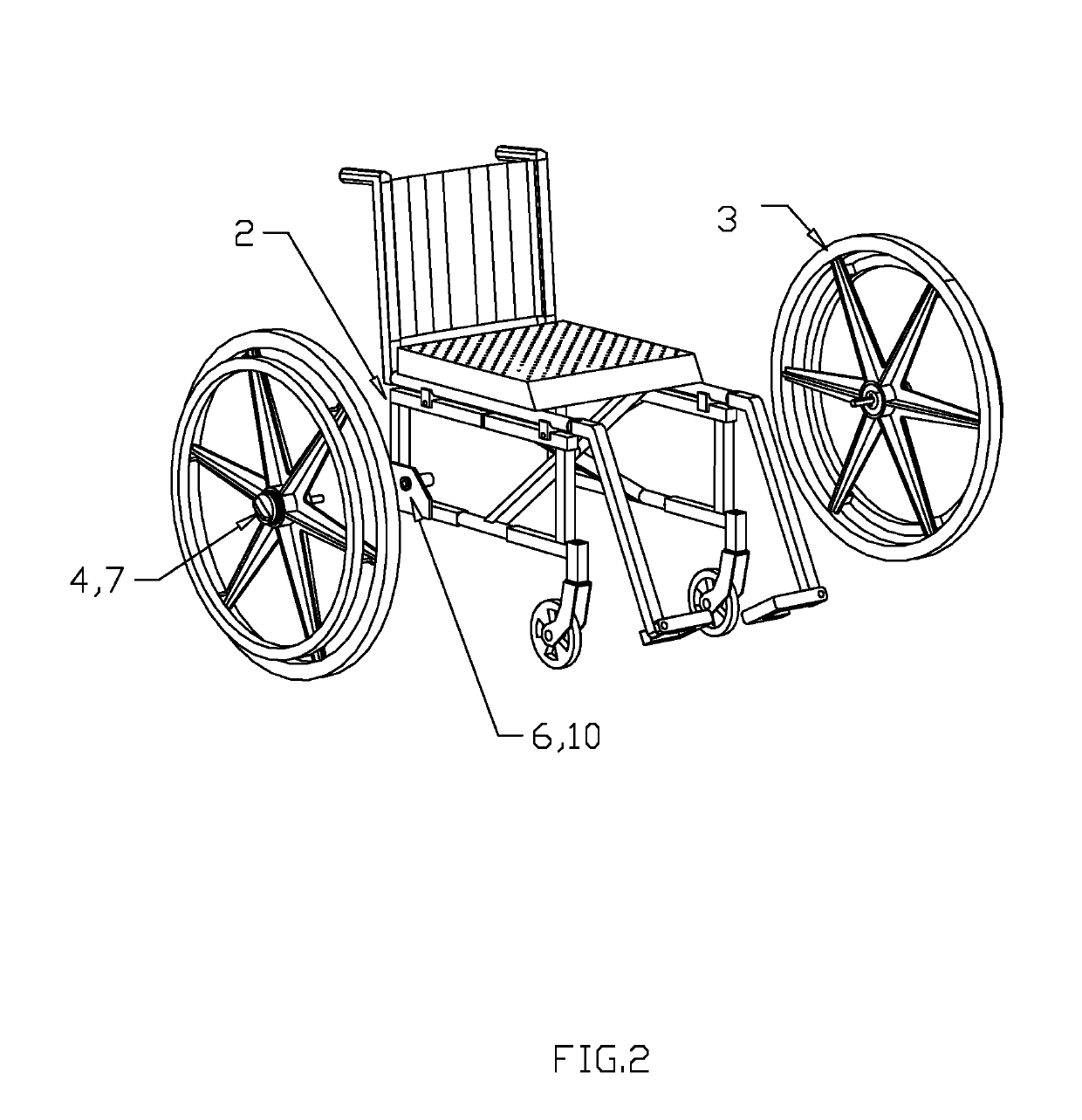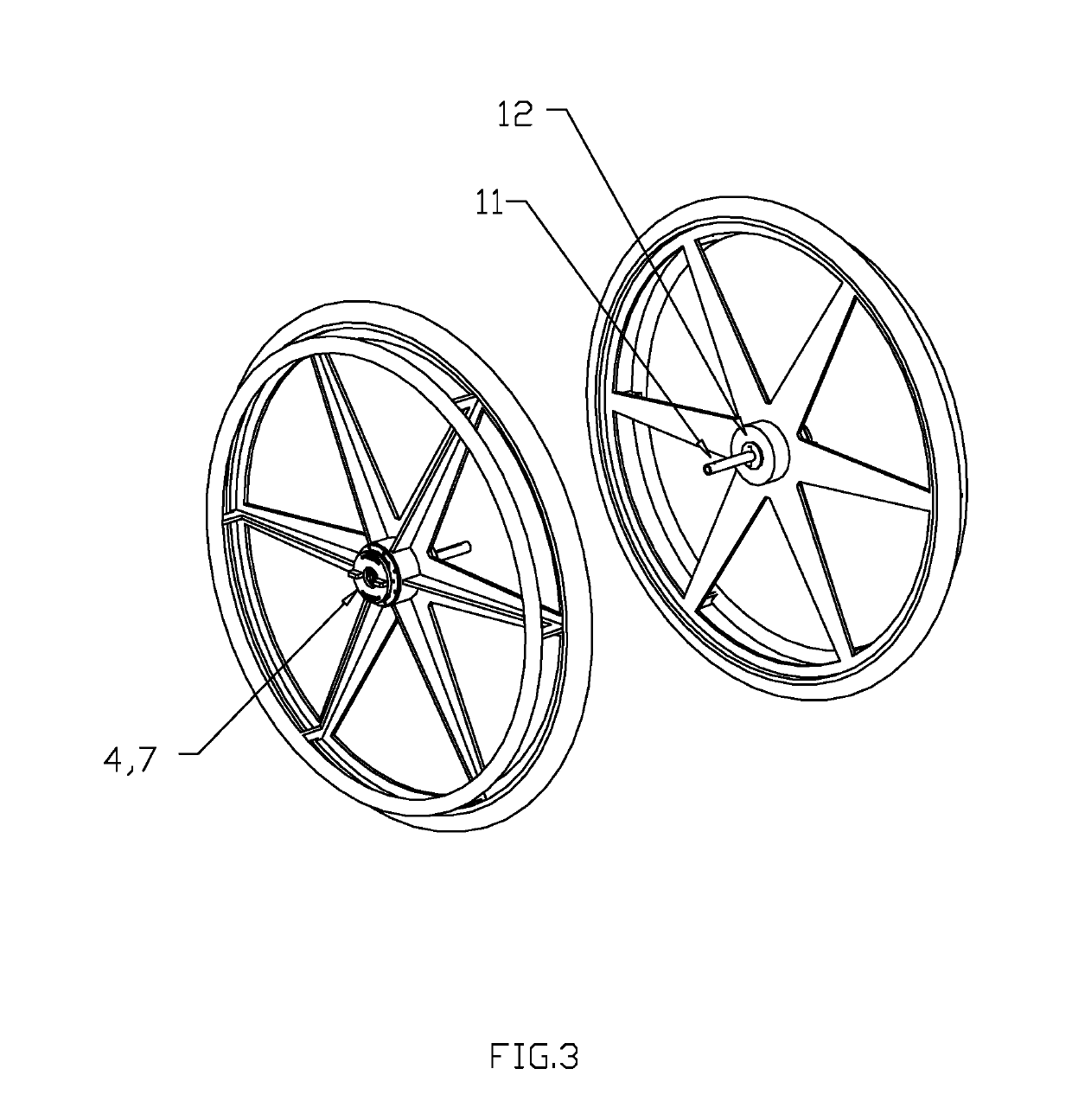Anti-rollback wheelchair device
a wheelchair and anti-rolling technology, applied in the direction of freewheel clutches, clutches, ambulance services, etc., can solve the problems of serious safety issues, inability to propel rearward to control what is commonly called a “wheelie”, and jamming of components
- Summary
- Abstract
- Description
- Claims
- Application Information
AI Technical Summary
Benefits of technology
Problems solved by technology
Method used
Image
Examples
Embodiment Construction
[0030]With reference to FIG. 1, a typical manual wheelchair 1 is shown with two of the preferred embodiments of the wheelchair anti-rollback device invention installed on a typical manual wheelchair frame 2. Although both embodiments are shown on a single wheelchair in the interest of brevity and clarity, a typical installation would include only one embodiment. Either embodiment of this invention will provide the functionality of two modes of operation, free-wheeling and anti-rollback. Rear wheels 3 with typical fixed pushrims 8 are shown in place on wheelchair frame 2. Mode selector knob 7 can be seen with knob rotation arrow 9 showing the knob rotation required to change modes. Obscured by knob 7 is the anti-rollback hub 4. Hub spindle socket 6 with torque reaction slot 10 is shown in FIGS. 2 and 4. Spindle shaft 11 with spindle shaft torque reaction pin 12 is shown in FIG. 3. The embodiment of this invention as appropriate to mount in a wheelchair wheel is shown in FIG. 5 along ...
PUM
 Login to View More
Login to View More Abstract
Description
Claims
Application Information
 Login to View More
Login to View More - R&D
- Intellectual Property
- Life Sciences
- Materials
- Tech Scout
- Unparalleled Data Quality
- Higher Quality Content
- 60% Fewer Hallucinations
Browse by: Latest US Patents, China's latest patents, Technical Efficacy Thesaurus, Application Domain, Technology Topic, Popular Technical Reports.
© 2025 PatSnap. All rights reserved.Legal|Privacy policy|Modern Slavery Act Transparency Statement|Sitemap|About US| Contact US: help@patsnap.com



